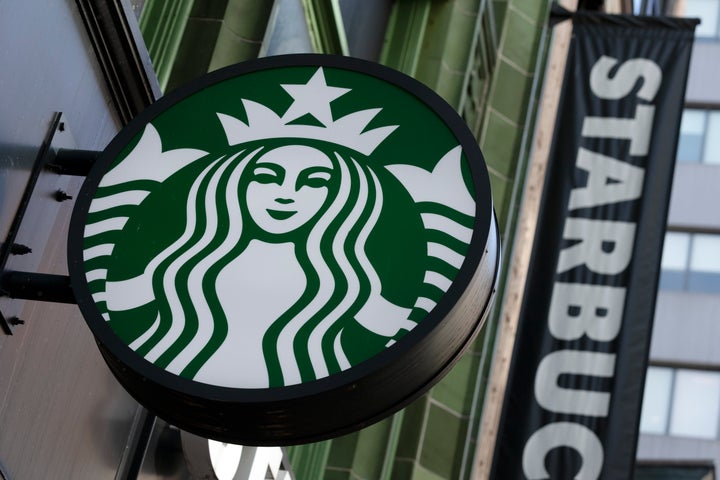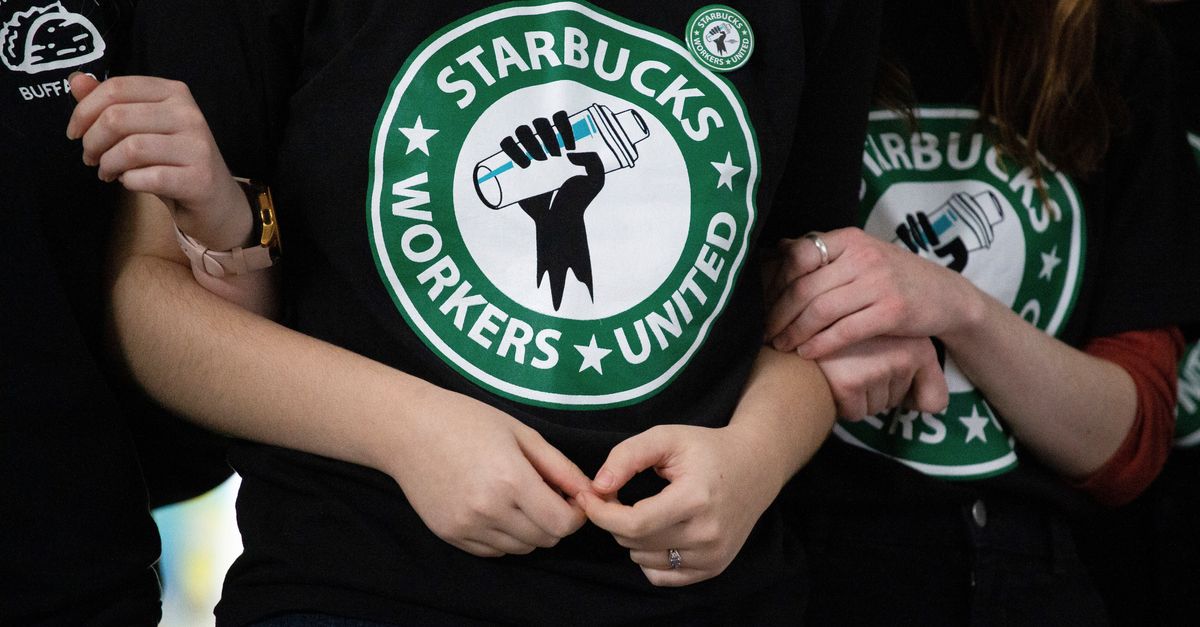Starbucks has agreed to sit down with workers from its 400 unionized stores in late April and start hammering out principles for a labor accord, another sign the coffee chain and the union may be on the cusp of a new, productive relationship.
Both sides said the bargaining sessions were meant to create a framework for collective bargaining agreements at the stores represented by the union, Workers United. Although a location has not yet been set, the talks will include delegates for the union stores meeting in person with company.
In a statement to HuffPost, Starbucks called it “a further demonstration of our joint commitment to a positive working relationship.”
“We remain committed to charting a new path forward with Starbucks and are making progress on bargaining details,” the union said in a statement.
“Starbucks called it ‘a further demonstration of our joint commitment to a positive working relationship.’”
Until now there have been no broad, nationwide negotiations between Starbucks and Workers United on settling contracts for the 10,000 employees who’ve unionized. The limited bargaining that’s taken place pertained to certain individual shops scattered around the country, making progress on a national accord all but impossible.
Getting representatives from Starbucks and the union stores together in one location would be a major step forward, although much bargaining remains before the two sides can reach first contracts. Workers United noted that any agreements that come out of the talks would still be subject to ratification by the individual stores.
The union has a list of bargaining demands that includes base pay of $20 per hour, expanded paid time off, guarantees for consistent scheduling and a fair process for organizing stores.

If the union manages to secure strong contracts with the company, it could encourage more baristas to organize their stores and join Workers United. The negotiations could also pave a smoother path to unionization with less opposition from the company.
The campaign, known as Starbucks Workers United, has been one of the most high-profile worker organizing efforts in years. None of the chain’s roughly 9,000 corporate-owned U.S. stores had union representation until Workers United began organizing them in Western New York in 2021, with the campaign soon spreading to other states.
The union accused Starbucks of firing union leaders, retaliating against pro-union baristas and shuttering stores where workers were organizing in an effort to chill the campaign. Judges at the National Labor Relations Board ruled that the company had violated the law in dozens of cases. Meanwhile, much of the bargaining was at a standstill over Starbucks’ insistence on having talks in person only, while the union wanted members to be able to participate virtually.
Starbucks co-founder and former CEO Howard Schultz once went so far as to say he could never embrace a union at the coffee chain.
But after two years of nonstop battling, Starbucks and the union announced last month that they had agreed to forge a more constructive relationship, set a framework for bargaining contracts and resolve their litigation. That includes an intellectual property lawsuit filed by Starbucks in which it accused the union of violating its trademarks through its name and logo.
Sara Kelly, the company’s top human resources officer, told employees in a letter that a fresh start with the union was part of CEO Laxman Narasimhan’s vision for the company. Narasimhan was committed to “restitching the fabric of the green apron for all partners at Starbucks,” Kelly said.







